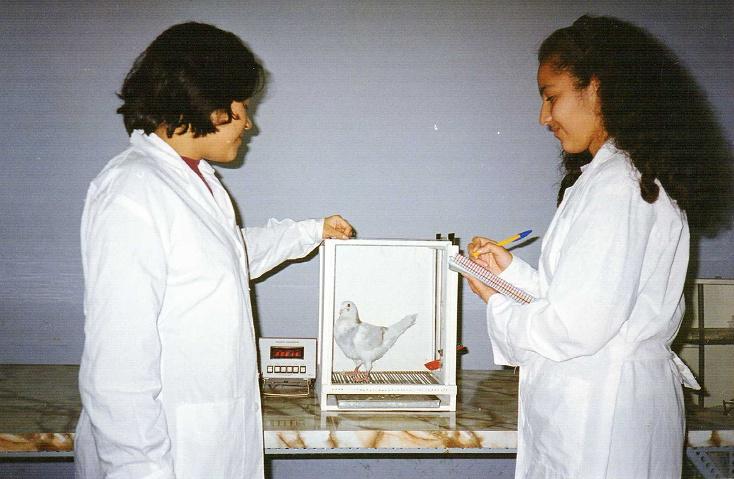Applied Univariate, Bivariate, and Multivariate Statistics: Understanding Statistics for Social and Natural Scientists, With Applications in SPSS and R 2nd Edition Daniel J. Denis
Visit to download the full and correct content document: https://ebookmass.com/product/applied-univariate-bivariate-and-multivariate-statistics -understanding-statistics-for-social-and-natural-scientists-with-applications-in-spss-an d-r-2nd-edition-daniel-j-denis/
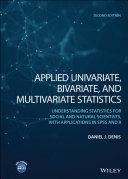
More products digital (pdf, epub, mobi) instant download maybe you interests ...
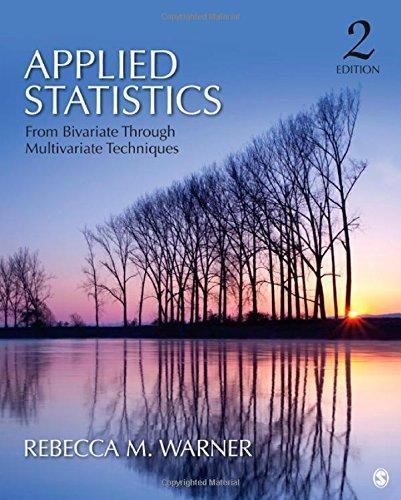
Applied Statistics: From Bivariate Through Multivariate Techniques Second
https://ebookmass.com/product/applied-statistics-from-bivariatethrough-multivariate-techniques-second/
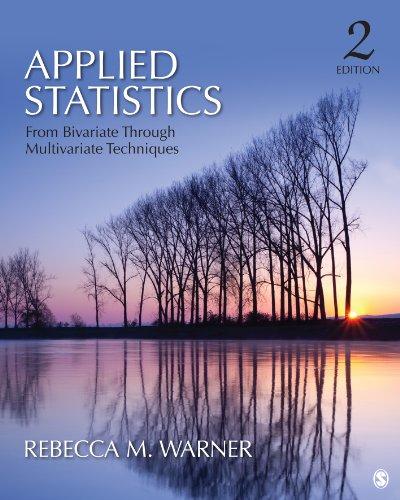
Applied Statistics: From Bivariate Through Multivariate Techniques Second Edition – Ebook PDF Version
https://ebookmass.com/product/applied-statistics-from-bivariatethrough-multivariate-techniques-second-edition-ebook-pdf-version/
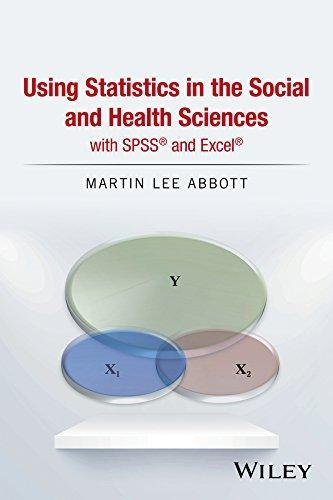
Using Statistics in the Social and Health Sciences with SPSS Excel 1st…
https://ebookmass.com/product/using-statistics-in-the-social-andhealth-sciences-with-spss-excel-1st/
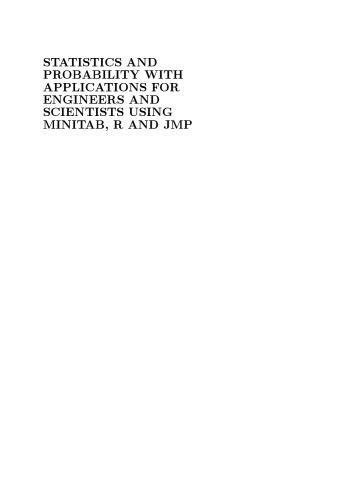
Statistics and Probability with Applications for Engineers and Scientists using MINITAB, R and JMP, Second Edition Bhisham C. Gupta
https://ebookmass.com/product/statistics-and-probability-withapplications-for-engineers-and-scientists-using-minitab-r-andjmp-second-edition-bhisham-c-gupta/
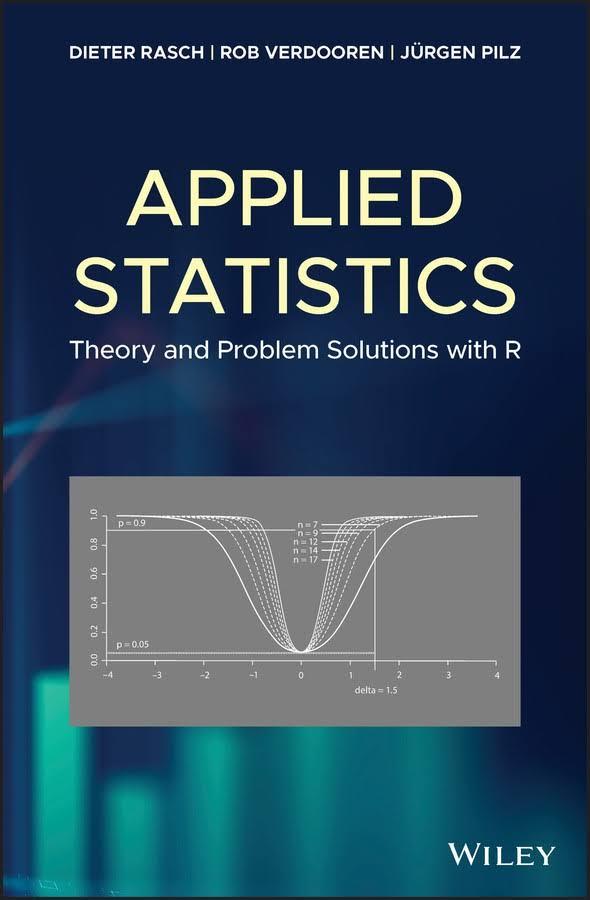
Applied Statistics: Theory and Problem Solutions with R
Dieter Rasch Rostock
https://ebookmass.com/product/applied-statistics-theory-andproblem-solutions-with-r-dieter-rasch-rostock/
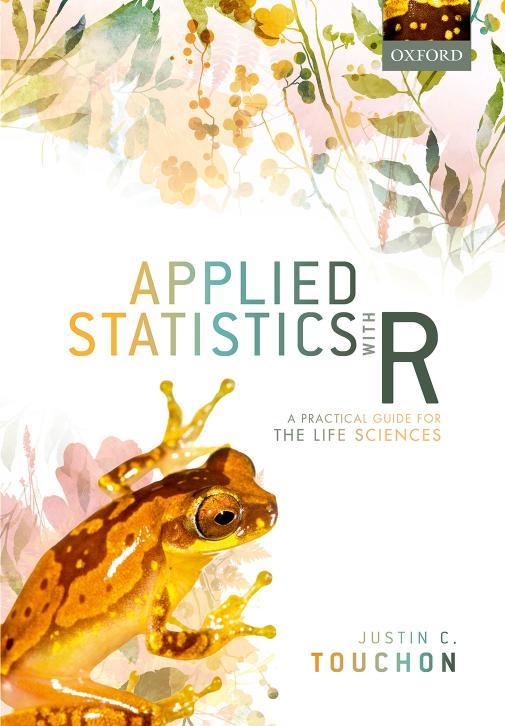
Applied Statistics with R: A Practical Guide for the Life Sciences Justin C. Touchon
https://ebookmass.com/product/applied-statistics-with-r-apractical-guide-for-the-life-sciences-justin-c-touchon/
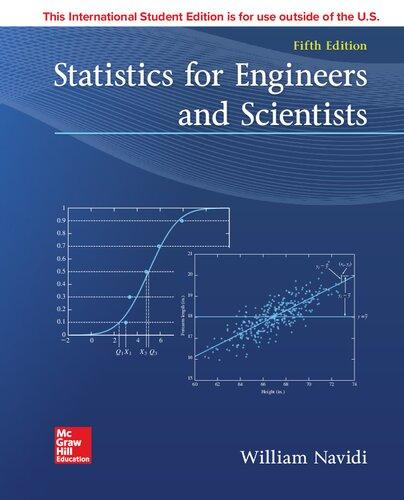
Statistics
for Engineers and Scientists 5th Edition
William Navidi
https://ebookmass.com/product/statistics-for-engineers-andscientists-5th-edition-william-navidi-2/

Statistics for Engineers and Scientists, 6th Edition
William Navidi
https://ebookmass.com/product/statistics-for-engineers-andscientists-6th-edition-william-navidi-2/

Statistics For Engineers and Scientists 6th Edition
William Navidi
https://ebookmass.com/product/statistics-for-engineers-andscientists-6th-edition-william-navidi/
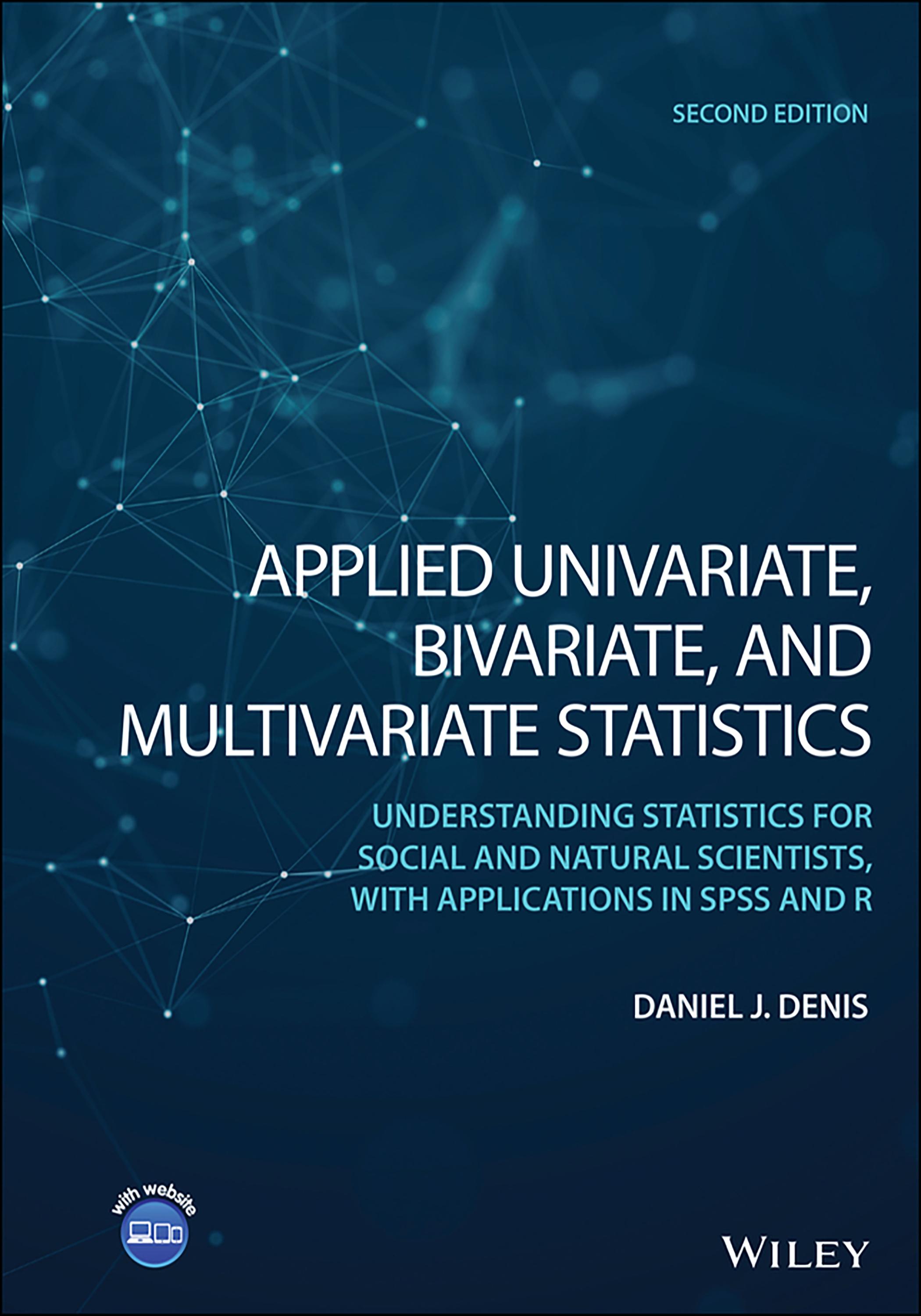
APPLIEDUNIVARIATE, BIVARIATE,AND MULTIVARIATE STATISTICS
APPLIEDUNIVARIATE, BIVARIATE,AND MULTIVARIATE
STATISTICS:
UNDERSTANDING
STATISTICSFORSOCIAL ANDNATURALSCIENTISTS, WITHAPPLICATIONS
INSPSSANDR
SecondEdition
Thissecondeditionfirstpublished2021 ©2021JohnWiley&Sons,Inc.
EditionHistory
JohnWileyandSons,Inc.(1e.2016)
Allrightsreserved.Nopartofthispublicationmaybereproduced,storedinaretrievalsystem,ortransmitted,inanyformor byanymeans,electronic,mechanical,photocopying,recordingorotherwise,exceptaspermittedbylaw.Adviceonhowto obtainpermissiontoreusematerialfromthistitleisavailableathttp://www.wiley.com/go/permissions.
TherightofDanielJ.Denistobeidentifiedastheauthorofthisworkhasbeenassertedinaccordancewithlaw.
RegisteredOffice
JohnWiley&Sons,Inc.,111RiverStreet,Hoboken,NJ07030,USA
EditorialOffice
111RiverStreet,Hoboken,NJ07030,USA
Fordetailsofourglobaleditorialoffices,customerservices,andmoreinformationaboutWileyproductsvisitusat www.wiley.com.
Wileyalsopublishesitsbooksinavarietyofelectronicformatsandbyprint-on-demand.Somecontentthatappearsinstandard printversionsofthisbookmaynotbeavailableinotherformats.
LimitofLiability/DisclaimerofWarranty
Whilethepublisherandauthorshaveusedtheirbesteffortsinpreparingthiswork,theymakenorepresentationsorwarranties withrespecttotheaccuracyorcompletenessofthecontentsofthisworkandspecificallydisclaimallwarranties,including withoutlimitationanyimpliedwarrantiesofmerchantabilityorfitnessforaparticularpurpose.Nowarrantymaybecreatedor extendedbysalesrepresentatives,writtensalesmaterialsorpromotionalstatementsforthiswork.Thefactthatanorganization, website,orproductisreferredtointhisworkasacitationand/orpotentialsourceoffurtherinformationdoesnotmeanthatthe publisherandauthorsendorsetheinformationorservicestheorganization,website,orproductmayprovideorrecommendations itmaymake.Thisworkissoldwiththeunderstandingthatthepublisherisnotengagedinrenderingprofessionalservices.The adviceandstrategiescontainedhereinmaynotbesuitableforyoursituation.Youshouldconsultwithaspecialistwhere appropriate.Further,readersshouldbeawarethatwebsiteslistedinthisworkmayhavechangedordisappearedbetweenwhen thisworkwaswrittenandwhenitisread.Neitherthepublishernorauthorsshallbeliableforanylossofprofitoranyother commercialdamages,includingbutnotlimitedtospecial,incidental,consequential,orotherdamages.
LibraryofCongressCataloging-in-PublicationDataappliedfor: ISBN978-1-119-58304-2
CoverDesign:Wiley CoverImage:©tatianazaets/GettyImages
Setin10/12ptTimesLTStdbySPiGlobal,Pondicherry,India 10987654321
AbouttheCompanionWebsite
1PreliminaryConsiderations1
1.1ThePhilosophicalBasesofKnowledge:RationalisticVersusEmpiricistPursuits,1
1.2Whatisa “Model”?,3
1.3SocialSciencesVersusHardSciences,5
1.4IsComplexityaGoodDepictionofReality?AreMultivariateMethodsUseful?,7
1.5Causality,8
1.6TheNatureofMathematics:MathematicsasaRepresentationofConcepts,8
1.7AsaScientist,HowMuchMathematicsDoYouNeedtoKnow?,10
1.8StatisticsandRelativity,11
1.9ExperimentalVersusStatisticalControl,12
1.10StatisticalVersusPhysicalEffects,12
1.11UnderstandingWhat “AppliedStatistics” Means,13 ReviewExercises,14 FurtherDiscussionandActivities,14
2IntroductoryStatistics16
2.1DensitiesandDistributions,17
2.1.1PlottingNormalDistributions,19
2.1.2BinomialDistributions,21
2.1.3NormalApproximation,23
2.1.4JointProbabilityDensities:BivariateandMultivariateDistributions,24
2.2Chi-SquareDistributionsandGoodness-of-FitTest,27
2.2.1PowerforChi-SquareTestofIndependence,30
2.3SensitivityandSpecificity,31
2.4ScalesofMeasurement:Nominal,Ordinal,Interval,Ratio,31
2.4.1NominalScale,32
2.4.2OrdinalScale,32
2.4.3IntervalScale,33
2.4.4RatioScale,33
2.5MathematicalVariablesVersusRandomVariables,34
2.6MomentsandExpectations,35
2.6.1SampleandPopulationMeanVectors,36
2.7EstimationandEstimators,38
2.8Variance,39
2.9DegreesofFreedom,41
2.10SkewnessandKurtosis,42
2.11SamplingDistributions,44
2.11.1SamplingDistributionoftheMean,44
2.12CentralLimitTheorem,47
2.13ConfidenceIntervals,47
2.14MaximumLikelihood,49
2.15Akaike’sInformationCriteria,50
2.16CovarianceandCorrelation,50
2.17PsychometricValidity,Reliability:ACommonUseofCorrelationCoefficients,54
2.18CovarianceandCorrelationMatrices,57
2.19OtherCorrelationCoefficients,58
2.20Student’s t Distribution,61
2.20.1 t-TestsforOneSample,61
2.20.2 t-TestsforTwoSamples,65
2.20.3Two-Sample t-TestsinR,65
2.21StatisticalPower,67
2.21.1VisualizingPower,69
2.22PowerEstimationUsingRandG∗Power,69
2.22.1EstimatingSampleSizeandPowerforIndependentSamples t-Test,71
2.23Paired-Samples t-Test:StatisticalTestforMatched-Pairs(ElementaryBlocking) Designs,73
2.24BlockingWithSeveralConditions,76
2.25CompositeVariables:LinearCombinations,76
2.26ModelsinMatrixForm,77
2.27GraphicalApproaches,79
2.27.1Box-and-WhiskerPlots,79
2.28WhatMakesa p-ValueSmall?ACriticalOverviewandPracticalDemonstration ofNullHypothesisSignificanceTesting,82
2.28.1NullHypothesisSignificanceTesting(NHST):ALegacyofCriticism,82
2.28.2TheMake-Upofa p-Value:ABriefRecapandSummary,85
2.28.3TheIssueofStandardizedTesting:AreStudentsinYourSchoolAchieving MorethantheNationalAverage?,85
2.28.4OtherTestStatistics,86
2.28.5TheSolution,87
2.28.6StatisticalDistance:Cohen’sd,87
2.28.7WhatDoesCohen’sdActuallyTellUs?,88
2.28.8WhyandWheretheSignificanceTestStillMakesSense,89
2.29ChapterSummaryandHighlights,89 ReviewExercises,92 FurtherDiscussionandActivities,95
3AnalysisofVariance:FixedEffectsModels97
3.1WhatisAnalysisofVariance?FixedVersusRandomEffects,98
3.1.1SmallSampleExample:AchievementasaFunctionofTeacher,99
3.1.2IsAchievementaFunctionofTeacher?,100
3.2HowAnalysisofVarianceWorks:ABigPictureOverview,101
3.2.1IstheObservedDifferenceLikely?ANOVA asaComparison(Ratio)of Variances,102
3.3LogicandTheoryofANOVA:ADeeperLook,103
3.3.1Independent-Samples t-TestsVersusAnalysisofVariance,104
3.3.2TheANOVA Model:ExplainingVariation,105
3.3.3BreakingDownaDeviation,106
3.3.4NamingtheDeviations,107
3.3.5TheSumsofSquaresofANOVA,108
3.4FromSumsofSquarestoUnbiasedVarianceEstimators:DividingbyDegreesof Freedom,109
3.5ExpectedMeanSquaresforOne-WayFixedEffectsModel:Derivingthe F-ratio,110
3.6TheNullHypothesisinANOVA,112
3.7FixedEffectsANOVA:ModelAssumptions,113
3.8AWordonExperimentalDesignandRandomization,115
3.9APreviewoftheConceptofNesting,116
3.10BalancedVersusUnbalancedDatainANOVA Models,116
3.11MeasuresofAssociationandEffectSizeinANOVA:MeasuresofVarianceExplained,117
3.11.1 η 2 Eta-Squared,117
3.11.2Omega-Squared,118
3.12The F-TestandtheIndependentSamples t-Test,118
3.13ContrastsandPost-Hocs,119
3.13.1IndependenceofContrasts,122
3.13.2IndependentSamples t-TestasaLinearContrast,123
3.14Post-HocTests,124
3.14.1Newman–KeulsandTukeyHSD,126
3.14.2TukeyHSD,127
3.14.3SchefféTest,128
3.14.4OtherPost-HocTests,129
3.14.5ContrastVersusPost-Hoc?WhichShouldIbeDoing?,129
3.15SampleSizeandPowerforANOVA:EstimationWithRandG∗Power,130
3.15.1PowerforANOVA inRandG∗Power,130
3.15.2Computing f,130
3.16FixedeffectsOne-WayAnalysisofVarianceinR:MathematicsAchievement asaFunctionofTeacher,133
3.16.1EvaluatingAssumptions,134
3.16.2Post-HocTestsonTeacher,137
3.17AnalysisofVarianceViaR’slm,138
3.18Kruskal-WallisTestinR andtheMotivationBehindNonparametricTests,138
3.19ANOVA inSPSS:AchievementasaFunctionofTeacher,140
3.20ChapterSummaryandHighlights,142 ReviewExercises,143
FurtherDiscussionandActivities,145
4FactorialAnalysisofVariance:ModelingInteractions146
4.1WhatisFactorialAnalysisofVariance?,146
4.2TheoryofFactorialANOVA:ADeeperLook,148
4.2.1DerivingtheModelforTwo-WayFactorialANOVA,149
4.2.2CellEffects,150
4.2.3InteractionEffects,151
4.2.4CellEffectsVersusInteractionEffects,152
4.2.5AModelfortheTwo-WayFixedEffectsANOVA,152
4.3ComparingOne-WayANOVA toTwo-WayANOVA:CellEffectsinFactorialANOVA VersusSampleEffectsinOne-WayANOVA,153
4.4PartitioningtheSumsofSquaresforFactorialANOVA:TheCaseofTwoFactors,153
4.4.1SS Total:AMeasureofTotalVariation,154
4.4.2ModelAssumptions:Two-WayFactorialModel,155
4.4.3ExpectedMeanSquaresforFactorialDesign,156
4.4.4RecapofExpectedMeanSquares,159
4.5InterpretingMainEffectsinthePresenceofInteractions,159
4.6EffectSizeMeasures,160
4.7Three-Way,Four-Way,andHigherModels,161
4.8SimpleMainEffects,161
4.9NestedDesigns,162
4.9.1VarietiesofNesting:NestingofLevelsVersusSubjects,163
4.10AchievementasaFunctionofTeacherandTextbook:ExampleofFactorial ANOVA inR,164
4.10.1ComparingModelsThroughAIC,167
4.10.2VisualizingMainEffectsandInteractionEffectsSimultaneously,169
4.10.3SimpleMainEffectsforAchievementData:BreakingDown InteractionEffects,170
4.11InteractionContrasts,171
4.12ChapterSummaryandHighlights,172 ReviewExercises,173
5IntroductiontoRandomEffectsandMixedModels175
5.1WhatisRandomEffectsAnalysisofVariance?,176
5.2TheoryofRandomEffectsModels,177
5.3EstimationinRandomEffectsModels,178
5.3.1TransitioningfromFixedEffectstoRandomEffects,178
5.3.2ExpectedMeanSquaresforMS BetweenandMSWithin,179
5.4DefiningNullHypothesesinRandomEffectsModels,180
5.4.1 F-RatioforTesting H0,181
5.5ComparingNullHypothesesinFixedVersusRandomEffectsModels: TheImportanceofAssumptions,182
5.6EstimatingVarianceComponentsinRandomEffectsModels:ANOVA, ML,REML Estimators,183
5.6.1ANOVA EstimatorsofVarianceComponents,183
5.6.2MaximumLikelihoodandRestrictedMaximumLikelihood,184
5.7IsAchievementaFunctionofTeacher?One-WayRandomEffectsModelinR,185
5.7.1ProportionofVarianceAccountedforbyTeacher,187
5.8RAnalysisUsingREML,188
5.9AnalysisinSPSS:ObtainingVarianceComponents,188
5.10FactorialRandomEffects:ATwo-WayModel,190
5.11FixedEffectsVersusRandomEffects:AWayofConceptualizingTheirDifferences,191
5.12ConceptualizingtheTwo-WayRandomEffectsModel:TheMake-Upofa RandomlyChosenObservation,192
5.13SumsofSquaresandExpectedMeanSquaresforRandomEffects:The ContaminatingInfluenceofInteractionEffects,193
5.13.1TestingNullHypotheses,194
5.14YouGetWhatYouGoInWith:TheImportanceofModelAssumptionsand ModelSelection,195
5.15MixedModelAnalysisofVariance:IncorporatingFixedandRandomEffects,196
5.15.1MixedModelinR,199
5.16MixedModelsinMatrices,199
5.17MultilevelModelingasaSpecialCaseoftheMixedModel:IncorporatingNesting andClustering,200
5.18ChapterSummaryandHighlights,201 ReviewExercises,202
6RandomizedBlocksandRepeatedMeasures204
6.1WhatisaRandomizedBlockDesign?,205
6.2RandomizedBlockDesigns:SubjectsNestedWithinBlocks,205
6.3TheoryofRandomizedBlockDesigns,207
6.3.1NonadditiveRandomizedBlockDesign,208
6.3.2AdditiveRandomizedBlockDesign,209
6.4TukeyTestforNonadditivity,211
6.5AssumptionsfortheCovarianceMatrix,212
6.6IntraclassCorrelation,213
6.7RepeatedMeasuresModels:ASpecialCaseofRandomizedBlockDesigns,215
6.8IndependentVersusPaired-Samples t-Test,215
6.9TheSubjectFactor:FixedorRandomEffect?,216
6.10ModelforOne-WayRepeatedMeasuresDesign,217
6.10.1ExpectedMeanSquaresforRepeatedMeasuresModels,217
6.11AnalysisUsingR:One-WayRepeatedMeasures:LearningasaFunctionofTrial,218
6.12AnalysisUsingSPSS:One-WayRepeatedMeasures:LearningasaFunctionofTrial,222
6.12.1WhichResultsShouldBeInterpreted?,224
6.13SPSS Two-WayRepeatedMeasuresAnalysisofVarianceMixedDesign: OneBetweenFactor,OneWithinFactor,226
6.13.1AnotherLookattheBetween-SubjectsFactor,229
6.14ChapterSummaryandHighlights,230 ReviewExercises,231
7LinearRegression232
7.1BriefHistoryofRegression,233
7.2RegressionAnalysisandScience:ExperimentalVersusCorrelationalDistinctions,235
7.3AMotivatingExample:CanOffspringHeightBePredicted?,236
7.4TheoryofRegressionAnalysis:ADeeperLook,238
7.5MultilevelYearnings,240
7.6TheLeast-SquaresLine,240
7.7MakingPredictionsWithoutRegression,241
7.8Moreabout εi,243
7.9ModelAssumptionsforLinearRegression,243
7.9.1ModelSpecification,245
7.9.2MeasurementError,245
7.10EstimationofModelParametersinRegression,246
7.10.1OrdinaryLeast-Squares(OLS),247
7.11NullHypothesesforRegression,248
7.12SignificanceTestsandConfidenceIntervalsforModelParameters,250
7.13OtherFormulationsoftheRegressionModel,251
7.14TheRegressionModelinMatrices:AllowingforMoreComplexMultivariableModels,252
7.15OrdinaryLeast-SquaresinMatrices,255
7.16AnalysisofVarianceforRegression,256
7.17MeasuresofModelFitforRegression:HowWellDoestheLinearEquationFit?,259
7.18Adjusted R2,260
7.19What “ExplainedVariance” MeansandMoreImportantly,WhatItDoesNotMean,260
7.20ValuesFitbyRegression,261
7.21Least-SquaresRegressioninR:UsingMatrixOperations,262
7.22LinearRegressionUsingR,265
7.23RegressionDiagnostics:ACheckonModelAssumptions,267
7.23.1UnderstandingHowOutliersInfluenceaRegressionModel,268
7.23.2ExaminingOutliersandResiduals,269
7.23.3DetectingOutliers,272
7.23.4NormalityofResiduals,274
7.24RegressioninSPSS:PredictingQuantitativefromVerbal,275
7.25PowerAnalysisforLinearRegressioninR,279
7.26ChapterSummaryandHighlights,281 ReviewExercises,283 FurtherDiscussionandActivities,285
8MultipleLinearRegression286
8.1TheoryofPartialCorrelation,287
8.2SemipartialCorrelations,288
8.3MultipleRegression,289
8.4SomePerspectiveonRegressionCoefficients: “ExperimentalCoefficients”?,290
8.5MultipleRegressionModelinMatrices,291
8.6EstimationofParameters,292
8.7ConceptualizingMultiple R,292
8.8InterpretingRegressionCoefficients:CorrelatedVersusUncorrelatedPredictors,293
8.9Anderson ’sIrisData:PredictingSepalLengthFromPetalLengthandPetalWidth,293
8.10FittingOtherFunctionalForms:ABriefLookatPolynomialRegression,297
8.11MeasuresofCollinearityinRegression:VarianceInflationFactorandTolerance,298
8.12R-squaredasaFunctionofPartialandSemipartialCorrelations: TheSteppingStonestoForwardandStepwiseRegression,300
8.13Model-BuildingStrategies:Simultaneous,Hierarchical,Forward,Stepwise,301
8.13.1Simultaneous,Hierarchical,Forward,303
8.13.2StepwiseRegression,305
8.13.3SelectionProceduresinR,306
8.13.4WhichRegressionProcedureShouldBeUsed?ConcludingCommentsand RecommendationsRegardingModel-Building,306
8.14PowerAnalysisforMultipleRegression,307
8.15IntroductiontoStatisticalMediation:ConceptsandControversy,307
8.15.1StatisticalVersusTrueMediation:SomePhilosophicalPitfallsinthe InterpretationofMediationAnalysis,309
8.16BriefSurveyofRidgeandLassoRegression:PenalizedRegressionModels andtheConceptofShrinkage,311
8.17ChapterSummaryandHighlights,313 ReviewExercises,314 FurtherDiscussionandActivities,315
9InteractionsinMultipleLinearRegression316
9.1TheAdditiveRegressionModelWithTwoPredictors,317
9.2WhytheInteractionistheProductTerm xizi:DrawinganAnalogytoFactorial ANOVA,318
9.3AMotivatingExampleofInteractioninRegression:CrossingaContinuousPredictor WithaDichotomousPredictor,319
9.4AnalysisofCovariance,323
9.4.1IsANCOVA “Controlling” forAnything?,325
9.5ContinuousModerators,326
9.6SummingUptheIdeaofInteractionsinRegression,326
9.7DoModeratorsReally “Moderate” Anything?,326
9.7.1SomePhilosophicalConsiderations,326
9.8InterpretingModelCoefficientsintheContextofModerators,327
9.9Mean-CenteringPredictors:ImprovingtheInterpretabilityofSimpleSlopes,328
9.10MultilevelRegression:AnotherSpecialCaseoftheMixedModel,330
9.11ChapterSummaryandHighlights,331 ReviewExercises,331
10LogisticRegressionandtheGeneralizedLinearModel333
10.1NonlinearModels,335
10.2GeneralizedLinearModels,336
10.2.1TheLogicoftheGeneralizedLinearModel:HowtheLink FunctionTransformsNonlinearResponseVariables,337
10.3CanonicalLinks,338
10.3.1CanonicalLinkforGaussianVariable,339
10.4DistributionsandGeneralizedLinearModels,339
10.4.1LogisticModels,339
10.4.2PoissonModels,340
10.5DispersionParametersandDeviance,340
10.6LogisticRegression,341
10.6.1AGeneralizedLinearModelforBinaryResponses,341
10.6.2ModelforSinglePredictor,342
10.7ExponentialandLogarithmicFunctions,343
10.7.1Logarithms,345
10.7.2TheNaturalLogarithm,346
10.8OddsandtheLogit,347
10.9PuttingItAllTogether:LogisticRegression,348
10.9.1TheLogisticRegressionModel,348
10.9.2InterpretingtheLogit:ASurveyofLogisticRegressionOutput,348
10.10LogisticRegressioninR,351
10.10.1ChallengerO-ringData,351
10.11ChallengerAnalysisinSPSS,354
10.11.1PredictionsofNewCases,356
10.12SampleSize,EffectSize,andPower,358
10.13FurtherDirections,358
10.14ChapterSummaryandHighlights,359 ReviewExercises,360
11MultivariateAnalysisofVariance361
11.1AMotivatingExample:QuantitativeandVerbalAbilityasaVariate,362
11.2ConstructingtheComposite,363
11.3TheoryofMANOVA,364
11.4IstheLinearCombinationMeaningful?,365
11.4.1ControlOverTypeIErrorRate,365
11.4.2CovarianceAmongDependentVariables,366
11.4.3Rao’sParadox,367
11.5MultivariateHypotheses,368
11.6AssumptionsofMANOVA,368
11.7Hotelling’s T2:TheCaseofGeneralizingFromUnivariatetoMultivariate,369
11.8TheCovarianceMatrixS,373
11.9FromSumsofSquaresandCross-ProductstoVariancesandCovariances,375
11.10HypothesisandErrorMatricesofMANOVA,376
11.11MultivariateTestStatistics,376
11.11.1Pillai’sTrace,378
11.11.2Lawley –Hotelling’sTrace,379
11.12EqualityofCovarianceMatrices,379
11.13MultivariateContrasts,381
11.14MANOVA inRandSPSS,382
11.14.1UnivariateAnalyses,386
11.15MANOVA ofFisher’sIrisData,387
11.16PowerAnalysisandSampleSizeforMANOVA,388
11.17MultivariateAnalysisofCovarianceandMultivariateModels: ABird’sEyeViewofLinearModels,389
11.18ChapterSummaryandHighlights,389
ReviewExercises,391
FurtherDiscussionandActivities,393
12DiscriminantAnalysis394
12.1WhatisDiscriminantAnalysis?TheBigPictureontheIrisData,395
12.2TheoryofDiscriminantAnalysis,396
12.2.1DiscriminantAnalysisforTwoPopulations,397
12.2.2SubstitutingtheMaximizingVectorintoSquaredStandardized Difference,398
12.3LDA inRandSPSS,399
12.4DiscriminantAnalysisforSeveralPopulations,405
12.4.1TheoryforSeveralPopulations,405
12.5DiscriminatingSpeciesofIris:DiscriminantAnalysesforThreePopulations,408
12.6ANoteonClassificationandErrorRates,410
12.6.1StatisticalLives,412
12.7DiscriminantAnalysisandBeyond,412
12.8CanonicalCorrelation,413
12.9MotivatingExampleforCanonicalCorrelation:Hotelling’s1936Data,414
12.10CanonicalCorrelationasaGeneralLinearModel,415
12.11TheoryofCanonicalCorrelation,416
12.12CanonicalCorrelationofHotelling’sData,418
12.13CanonicalCorrelationontheIrisData:ExtractingCanonicalCorrelation FromRegression,MANOVA,LDA,419
12.14ChapterSummaryandHighlights,420
ReviewExercises,421
FurtherDiscussionandActivities,422
13PrincipalComponentsAnalysis423
13.1HistoryofPrincipalComponentsAnalysis,424
13.2Hotelling1933,426
13.3TheoryofPrincipalComponentsAnalysis,428
13.3.1TheTheoremofPrincipalComponentsAnalysis,428
13.4EigenvaluesasVariance,429
13.5PrincipalComponentsasLinearCombinations,429
13.6ExtractingtheFirstComponent,430
13.6.1SampleVarianceofaLinearCombination,430
13.7ExtractingtheSecondComponent,431
13.8ExtractingThirdandRemainingComponents,432
13.9TheEigenvalueastheVarianceofaLinearCombinationRelativetoitsLength,432
13.10DemonstratingPrincipalComponentsAnalysis:Pearson’s1901Illustration,433
13.11ScreePlots,436
13.12PrincipalComponentsVersusLeast-SquaresRegressionLines,439
13.13CovarianceVersusCorrelationMatrices:PrincipalComponentsandScaling,441
13.14PrincipalComponentsAnalysisUsingSPSS,441
13.15ChapterSummaryandHighlights,445
ReviewExercises,446
FurtherDiscussionandActivities,448
14FactorAnalysis449
14.1HistoryofFactorAnalysis,450
14.2FactorAnalysisataGlance,450
14.3ExploratoryVersusConfirmatoryFactorAnalysis,451
14.4TheoryofFactorAnalysis:TheExploratoryFactor-AnalyticModel,451
14.5TheCommonFactor-AnalyticModel,452
14.6AssumptionsoftheFactor-AnalyticModel,454
14.7WhyModelAssumptionsareImportant,455
14.8TheFactorModelasanImplicationfortheCovarianceMatrix Σ,456
14.9Again,Whyis Σ = ΛΛ + ψ SoImportantaResult?,457
14.10TheMajorCritiqueAgainstFactorAnalysis:Indeterminacyandthe NonuniquenessofSolutions,457
14.11HasYourFactorAnalysisBeenSuccessful?,459
14.12EstimationofParametersinExploratoryFactorAnalysis,460
14.13PrincipalFactor,460
14.14MaximumLikelihood,461
14.15TheConcepts(andCriticisms)ofFactorRotation,462
14.16VarimaxandQuartimaxRotation,464
14.17ShouldFactorsBeRotated?IsThatNotCheating?,465
14.18SampleSizeforFactorAnalysis,466
14.19PrincipalComponentsAnalysisVersusFactorAnalysis:TwoKeyDifferences,466
14.19.1HypothesizedModelandUnderlyingTheoreticalAssumptions,466
14.19.2SolutionsareNotInvariantinFactorAnalysis,467
14.20PrincipalFactorinSPSS:PrincipalAxisFactoring,468
14.21BartlettTestofSphericityandKaiser-Meyer-OlkinMeasureof SamplingAdequacy(MSA),474
14.22FactorAnalysisinR:HolzingerandSwineford(1939),476
14.23ClusterAnalysis,477
14.24WhatisClusterAnalysis?TheBigPicture,478
14.25MeasuringProximity,480
14.26HierarchicalClusteringApproaches,483
14.27NonhierarchicalClusteringApproaches,485
14.28 K-MeansClusterAnalysisinR,486
14.29GuidelinesandWarningsAboutClusterAnalysis,489
14.30ABriefLookatMultidimensionalScaling,489
14.31ChapterSummaryandHighlights,492 ReviewExercises,493
FurtherDiscussionandActivities,496
15PathAnalysisandStructuralEquationModeling497
15.1PathAnalysis:AMotivatingExample PredictingIQAcrossGenerations,498
15.2PathAnalysisand “CausalModeling”,500
15.3EarlyPost-WrightPathAnalysis:PredictingChild’sIQ(Burks,1928),502
15.4DecomposingPathCoefficients,503
15.5PathCoefficientsandWright’sContribution,504
15.6PathAnalysisinR AQuickOverview:ModelingGalton’sData,505
15.6.1PathModelinAMOS,508
15.7ConfirmatoryFactorAnalysis:TheMeasurementModel,510
15.7.1ConfirmatoryFactorAnalysisasaMeansofEvaluatingConstruct ValidityandAssessingPsychometricQualities,512
15.8StructuralEquationModels,514
15.9Direct,Indirect,andTotalEffects,515
15.10TheoryofStatisticalModeling:ADeeperLookIntoCovarianceStructures andGeneralModeling,516
15.11TheDiscrepancyFunctionandChi-Square,518
15.12Identification,519
15.13DisturbanceVariables,520
15.14MeasuresandIndicatorsofModelFit,521
15.15OverallMeasuresofModelFit,522
15.15.1RootMeanSquareResidualandStandardizedRootMeanSquare Residual,522
15.15.2RootMeanSquareErrorofApproximation,523
15.16ModelComparisonMeasures:IncrementalFitIndices,523
15.17WhichIndicatorofModelFitisBest?,525
15.18StructuralEquationModelinR,526
15.19HowAllVariablesAreLatent:ASuggestionforResolvingtheManifest-Latent Distinction,528
15.20TheStructuralEquationModelasaGeneralModel:SomeConcluding ThoughtsonStatisticsandScience,529
15.21ChapterSummaryandHighlights,530 ReviewExercises,531
FurtherDiscussionandActivities,533

